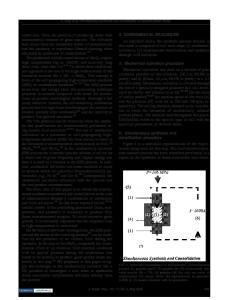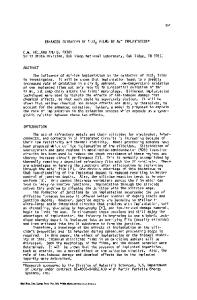Synthesis of MoSi 2 -TiSi 2 pseudobinary alloys by reactive sintering
- PDF / 609,229 Bytes
- 7 Pages / 612 x 792 pts (letter) Page_size
- 74 Downloads / 291 Views
N
AN intermetallic compound of molybdenum disilicide, MoSi2, is one of the promising potential structural materials that might be used at high temperatures above 1500 K, because it combines a high melting temperature of 2293 K, excellent oxidation resistance at high temperatures between 900 and 2000 K, reasonable strength and density, and good thermal conductivity.[1,2] However, MoSi2 also has some significant disadvantages such as brittleness at room temperature and active oxidation at low temperatures around 800 K.[3] The ductility of MoSi2 at room temperature can be improved to an extent by fiber reinforcement with the borides of zirconium or titanium.[4] On the other hand, the active oxidation at low temperatures, which is termed as “pest,” is a fatal disadvantage of MoSi2, because when a piece of cast MoSi2 is exposed to air at 773 K for 3 days, for example, it completely turns to powder.[5] This phenomenon is caused by the formation of a volatile molybdenum oxide, which is in contrast to the formation of a protective film of silica at high temperatures between 900 and 2000 K.[6,7] Although the problem of pesting phenomenon has not been completely solved, it is reported that formation of a thick protective film of silica by preoxidation and diminution of micropores or microcracks by hot-isostatic pressing are effective in improving the oxidation resistance at low temperatures around 800 K.[7,8] We have studied the effects of the addition of aluminum on the chemical and mechanical properties of MoSi2 and found that the addition of aluminum improves the oxidation resistance at 773 K, but it brings about little effect on the density and hardness.[9] When aluminum is added to MoSi2, aluminum atoms replace silicon atoms to produce Mo(Al, KIYOTAKA MATSUURA and TATSUYA OHMI, Research Associates, and MASAYUKI KUDOH, Professor, are with the Division of Materials Science and Engineering, Graduate School of Engineering, Hokkaido University, Hokkaido 060-8628, Japan. TOHRU HASEGAWA, formerly Graduate Student, Division of Materials Science and Engineering, Graduate School of Engineering, Hokkaido University, is a research worker with Kawasaki Heavy Industries, Ltd., Hyogo 650-8680, Japan. Manuscript submitted April 27, 1999. METALLURGICAL AND MATERIALS TRANSACTIONS A
Si)2, in which aluminum content varies from 6.7 to 33.3 at. pct without change in lattice structure of the hexagonal C40.[10] In contrast with the addition of aluminum, when titanium is added to MoSi2, titanium atoms replace molybdenum atoms to produce (Mo, Ti)Si2, in which titanium content varies from 0 to 33.3 at. pct with change in lattice structure from the tetragonal C11b of ␣-MoSi2 through the hexagonal C40 of -MoSi2 to the orthorhombic C54 of ␥-TiSi2.[11] The addition of titanium may improve the mechanical properties of the MoSi2-base alloys, because it brings about a dualphase structure of (␣ ⫹ ) or ( ⫹ ␥). The grain size in a dual-phase structure is usually smaller than that in a monophase structure. Additionally, alloying of MoSi2 with titanium ma
Data Loading...











